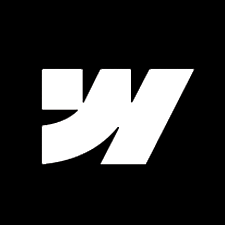How we will add $2,391,091.68+ to this brand in 2024.
By Nicholas Reed
February 12, 2024

Back in October, I got a referral from a friend’s agency. They had a client who sells high-end office furniture accessories and was profitable and slowly scaling, but they weren’t scaling as quickly as they thought they could.
This super-niche brand owns their entire process so they have a lot of flexibility with their scalability. In fact, they have their own US-based factory so growth is virtually endless operationally.
In 2023, this brand brought in about $5.8m but struggled to convert shoppers into buyers.
The problem?
Someone would click on an ad then land on a homepage or product page that really didn’t offer much information about the product.
Really the only information the website offered was about product compatibility.
That’s it.
This is an extra big problem because his brand sells a highly premium product. In fact, they are a little over double the price of any competitor!
The website didn’t convey any information about why the brand demanded such a premium price.
Sure the product page had some cool graphics and looked tidy, but this product page didn’t follow our golden rule of conversion:
Give your shoppers all the information they need to make an educated buying decision.
In this case, the product page was offering ¼ of the value props which clearly wasn’t enough to convince a shopper to dish out twice the cash compared to a competitor.
So how did we increase conversions 42% for this brand?
First and foremost, we turned to our analytics.
The three key areas we looked at were:
- Shopify analytics
- Shopify reviews
- Hotjar
We started off with Shopify Analytics.
We focused on the conversion rate breakdown from ATC to purchase as well as the most trafficked pages and sources of traffic. This helped us understand the shopper intent while uncovering possible pinch points in the shopper journey.
Most of this data checked out and was “in spec” for where we expected it to be, but the ATC rate was pretty low.
Ding ding ding! We have an issue.
Next, we dove into reviews on the product pages.
What were people excited about? What were they disappointed in?
Using review data, we determined that the site wasn’t sharing enough information about why customers were actually willing to pay a premium.
In other words, the site lacked a lot of value props! Sure it gave the bare bones information, but it didn’t give any wow-factor to product quality at all!
Great! We got an understanding of what information was missing so we could start building a framework for the new site.
From here, we looked at HotJar.
We wanted to see some heatmaps on the product pages as well as data around how far down the pages people were going.
Upon looking at the data, we concluded that people were actually going to a few areas the most (unsurprisingly).
- Reviews
- All the down, then back up
- Fitment information
What did this show us?
First and foremost, it showed us that people were looking for information, but couldn't find what they were looking for. People were spending time on reviews, but they were quickly brushing over all of the product information instead of learning about the product benefits and quality.
Instead, people were getting a general idea of the benefits and quality from the reviews.
This is good since it’s from a 3rd party, but it reduces control over what information we are sharing with our customers.
At this point, we had enough information to make some educated design and customer journey decisions. Here is a summary of the information collected and the key areas we needed to focus on:
- Comfort and health from better posture
- Industry leading quality that exactly matches the chair
- USA Manufacturing
Now with this information, we were able to build a value driving customer journey and informational website that was designed to convert well with the current marketing strategy.
The biggest improvement on this site came on the product page so I will summarize the sections here to give you an idea of what this looks like.
- Hero with a summary of all information needed to make a buying decision such as reviews, price, fit, colors, product quality, and buyer persona.
- Value prop overview to quickly outline why this product is worthy of the hefty price tag.
- Visual education to break down more product quality information.
- Education around why this product is needed and the problems it’s solving as well as the benefits of those solutions. In this case, we focused on how the product will improve posture which will lead to better productivity.
- Customer reviews
- Made in the USA information. This is a value prop for some buyers, but it isn’t as important as the other ones based on the reviews.
- Reiterate educational information around how the product will help users be more productive from an improved posture.
- Overview of the USA manufacturing and product quality.
This structure, we were able to tackle all of the key buying reasons for each customer persona (quality and benefits).
Now as people click from an ad or email, they are able to get all of the information they need to make an educated buying decision while justifying the premium price tag.
If your store isn’t converting as well as you think it could or should be, use this process to learn why your store isn’t converting and learn how you can improve your site as effectively as possible.
Have a question about this resource?
Please take a moment to fill out our form and we will help you out as soon as possible!
Thank you! Your submission has been received!
Oops! Something went wrong while submitting the form.













